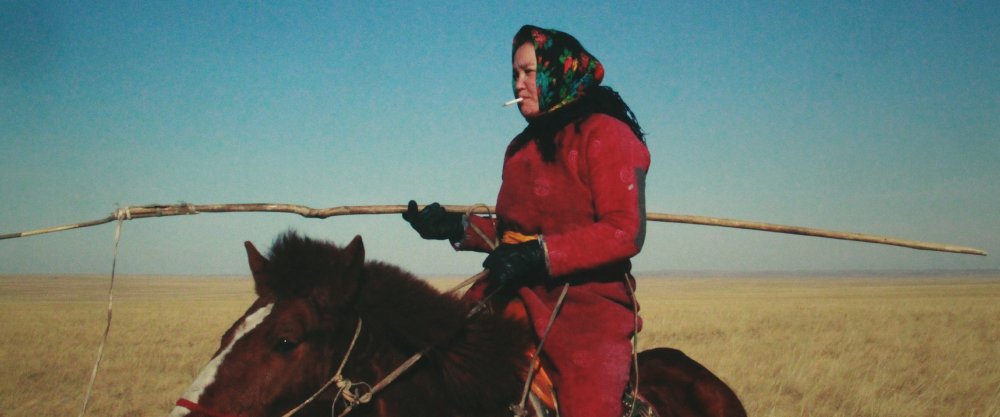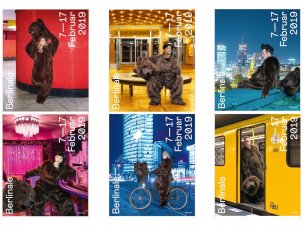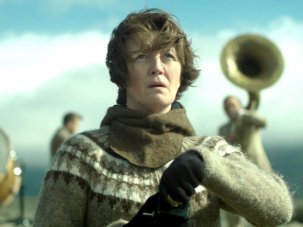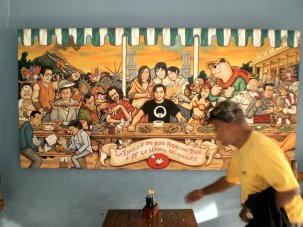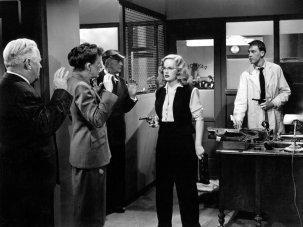Öndög opens with an automobile’s-eye-view of the Mongolian plain, tall grass and roaming horses lit up by headlights as we move not too urgently onward. Two men talk from behind the camera, one casually telling a story – of a wolf hunter accidentally killing a dog – capped off with a surprisingly weighty warning: our human eyes do not always show us the truth.
Mongolia 2019
100 mins
Director Wang Quan’an
Cast
Herdswoman Dulamjav Enkhtaivan
Herdsman Aorigeletu
Young Policeman Norovsambuu Batmunkh
Chief of Police Gangtemuer Arild
This applies to hunting as it does the film. The car stops suddenly upon discovering a woman’s dead, naked body among the grass, and the story begins to move forward. Some time later, policemen arrive to secure the body, but are harassed by a wolf, unafraid of pistols, that must be scared off by a rifle-toting herdswoman (Dulamjav Enkhtaivan). She is sent away once her work is done, but will return eventually, and it isn’t until quite a bit later that we learn this is actually her film. Both the dead body and the rookie policeman (Norovsambuu) left to guard it are merely red herrings.
Director Wang Quan’an had previously approached (Inner) Mongolian subject matter in his Golden Bear-winning Tuya’s Marriage in 2006, but has ventured past his native China for his return to the milieu, this time a Mongolian national production. The look of the new film is similar in its focus on broad, canvas-like exteriors and drab interiors, but here everything appears amplified. The human characters look smaller against the Mongolian steppe, the sky features more vivid colours at sunset, the atmosphere feels colder. Öndög, like Tuya, also takes great care in depicting animals, most memorably the herdswoman’s majestically furry camel, whose deadpan expression brings an unexpected touch of comedy to several scenes.
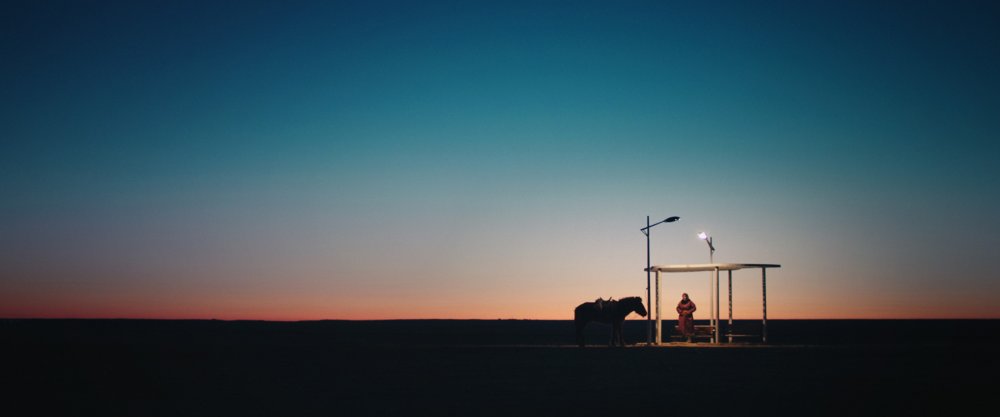
The öndög of the film’s untranslated title refers to eggs, here specifically to fossilised dinosaur eggs – a concept that doesn’t appear until very late in the film but illustrates more clearly what sort of story it wants to tell. The unnamed herdswoman at the film’s centre is a solitary, self-sufficient figure; a crack shot with rifle and a veteran herder whose antisocial lifestyle and age leads those who know her to dub her ‘dinosaur’.
She seems to have one friend, a drunken fellow herdsman (Aorigeletu) who she calls for help butchering sheep or delivering calves, both depicted in memorably graphic scenes. He insistently badgers her to hurry up and find a man to marry her. She shrugs off the idea, suggesting she is comfortable with her life as is – though she is quick to flirtatiously interrogate the meek, much younger policeman over a bottle of liquor not long after.
Soon the murder-mystery pretence is dropped (the culprit is introduced in cuffs – a jilted lover, of course) and we turn our attention fully to the herdswoman, whose sudden display of affection opens up the film to examine her desires in detail. She teases the romantically inexperienced policeman for his lack of initiative, but we learn that she is in a similar boat for her own reasons.
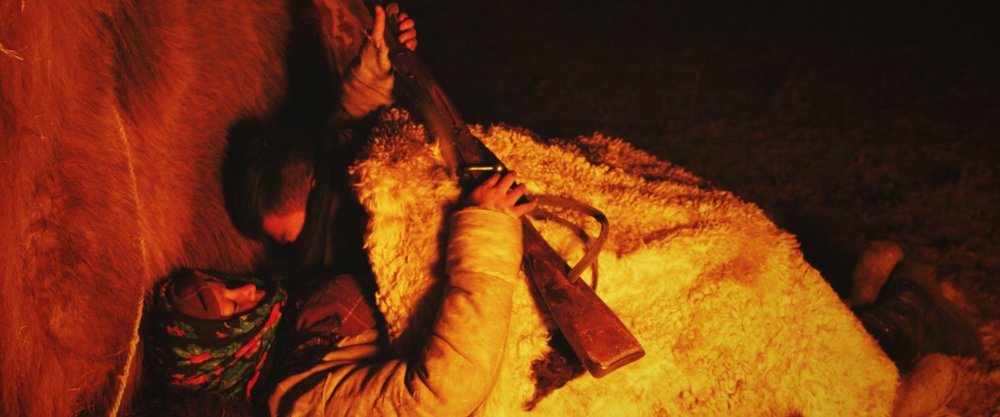
When the promised öndög finally enters the picture, the otherwise meandering and tantalisingly vague film’s intention becomes more clear. Unlike many films that peel back a ‘normal’ appearance to reveal a sensational genre core (think Audition), here we are offered what seems to be an arthouse police procedural but reveals itself to be an unrelated intimate personal drama, even a romance of sorts. By the time the memorable and surprisingly sweet finale rolls around, we’ve all but forgotten we began with a cruel murder.
-
The Digital Edition and Archive quick link
Log in here to your digital edition and archive subscription, take a look at the packages on offer and buy a subscription.




